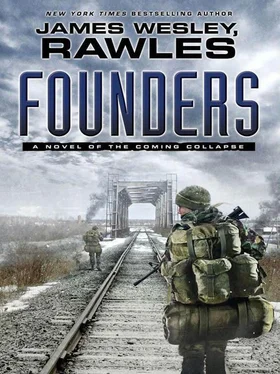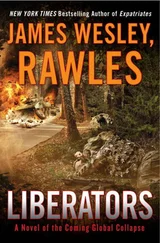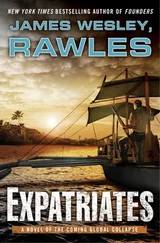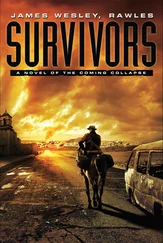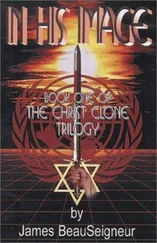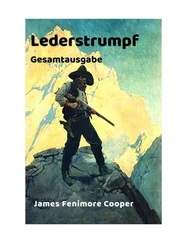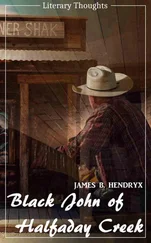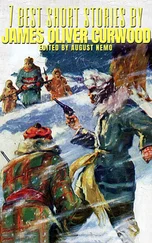James Rawles - Founders
Здесь есть возможность читать онлайн «James Rawles - Founders» весь текст электронной книги совершенно бесплатно (целиком полную версию без сокращений). В некоторых случаях можно слушать аудио, скачать через торрент в формате fb2 и присутствует краткое содержание. Город: New York, Год выпуска: 2012, ISBN: 2012, Издательство: Emily Bestler Books, Жанр: sf_postapocalyptic, на английском языке. Описание произведения, (предисловие) а так же отзывы посетителей доступны на портале библиотеки ЛибКат.
- Название:Founders
- Автор:
- Издательство:Emily Bestler Books
- Жанр:
- Год:2012
- Город:New York
- ISBN:978-1-4391-7282-7
- Рейтинг книги:5 / 5. Голосов: 1
-
Избранное:Добавить в избранное
- Отзывы:
-
Ваша оценка:
- 100
- 1
- 2
- 3
- 4
- 5
Founders: краткое содержание, описание и аннотация
Предлагаем к чтению аннотацию, описание, краткое содержание или предисловие (зависит от того, что написал сам автор книги «Founders»). Если вы не нашли необходимую информацию о книге — напишите в комментариях, мы постараемся отыскать её.
Founders — читать онлайн бесплатно полную книгу (весь текст) целиком
Ниже представлен текст книги, разбитый по страницам. Система сохранения места последней прочитанной страницы, позволяет с удобством читать онлайн бесплатно книгу «Founders», без необходимости каждый раз заново искать на чём Вы остановились. Поставьте закладку, и сможете в любой момент перейти на страницу, на которой закончили чтение.
Интервал:
Закладка:
There was another long, uncomfortable pause.
Terry spoke up. “Sir, you’re just going to have to trust us. Some things you just have to do on faith.”
Perkins nodded deeply, and then said over his shoulder, “Karen! I think we’ve found our hired help!”
The door swung open to reveal a petite woman holding a 12-gauge Browning pump shotgun with a goose-length barrel. She said quietly, “Hi. I’m the backup.”
Durward gestured them toward the door and said, “Come on in the front room, and we’ll get you some coffee.”
Ken and Terry were surprised to see the top of the living room and hallway strung with dozens of wires held up by eyebolts. Hundreds of strips of brined beef were hung from the wires. Karen Perkins explained that for the past three weeks she and Durward had been converting all the beef from their chest freezer into jerky. The fat trimming, slicing, and brining was a labor-intensive operation that had begun even before the utility power had gone out. Karen Perkins described it. “After we brine the meat, the strips get blotted dry and then hung up over the kitchen sink or the laundry room sink for eight hours. Then, after we’re sure they’ve stopped dripping, we move them to the wires in the hall and the living room. It’s a big, ongoing process. It’ll be another week before we’re done.”
After more introductions, Perkins summarized his situation. “There’s only about 2,300 people in West Branch, but there’s about 70,000 in Iowa City, and they’re starting to starve . And there’s almost twice that much population in Cedar Rapids. And that ain’t to mention all the millions of hungry riffraff from around Chicago—ah, present company excepted, that is.”
Glancing again at Ken’s rifle, he said, “The trouble is, we’re just too close to Interstate 80. There are just way too many people still following that corridor. A lot of them are on foot or on bicycles now. Most are legitimate refugees, but a good portion of them are looters. I hear that the worst ones are in trucks and vans. They take gasoline at gunpoint wherever they go. They’re brutal. The looters that have been hitting Iowa City are bound to make their way here sooner or later.”
“So what exactly do you propose, D.?” Ken asked
“I’m offering you room and board, in exchange for you two being my security staff, twenty-four hours a day, regardless of the weather.”
“So, twelve on, twelve off?”
Perkins nodded and said, “Or six-hour, or eight-hour shifts, however you want to cover it. But I need to have someone watching the road and all around the house and outbuildings at all times. I can fill in if either of you catch a cold or something. Otherwise, you’re it . No pay, but we’ll feed you, and house you, and I’ll replace any ammo you use defending the place. Karen can wash your laundry.”
Ken turned to Terry and gave her a quizzical look. Then they both nodded.
Ken looked Durward in the eye, and said with a nod, “Okay, we’ll do it.”
They were provided a small bedroom in the back of the house that doubled as Karen’s sewing and craft room.
After surveying the property, they determined that the tallest silo had a commanding view and was in an advantageous position for a watch tower. The silo, built by the Boythorpe Company, was an unusual design. Like most steel silos, it had a caged ladder going up the side. But instead of just a typical cone-shaped roof, it had an almost flat roof and cupola structure with a five-foot-tall “Patented, All Weather” door that had a pair of hatch levers near the top and bottom. The cupola was designed to give access to the top of the silo’s unloader conveyor.
The field of view from the silo’s doorway included the house, and nearly all of the barnyard. It also had a sweeping view of Charles Avenue. It took only a few hours to set up the cupola as a guard post. They first laid down a forty-inch octagon that was hand-sawn from a sheet of three-quarter-inch plywood. This covered the twenty-eight-inch-diameter loading port. Because of the confines of the caged ladder, the plywood was hoisted up with a rope. They then hoisted up an upholstered chair that fit nicely through the door of the cupola.
After the first day, they added a bronze Japanese brazier, in which they burned wood scraps and dried corn kernels. The Meiji-era brazier had been brought home at the end of World War II by Durward’s grandfather, who had fought in the Pacific Theater. Just ten inches high, the tubular hibachi was a fairly plain design, with a light etching of an ancient castle on one side. For many years it had just been used by the Perkins family to hold potted plants. The brazier kept the cupola warm enough to be bearable all through the winter. A crude wire rack on top of the brazier could be topped with a teapot or a small fry pan for reheating foods.
After the chair was in place, Durward asked, “What’ll we use for an alarm?”
Ken answered his question with one of his own: “Tell me, D.: Do you have any scrap steel pipe?”
“Sure do, depending on the diameter.”
They soon found a thirty-inch length of four-inch-diameter steel pipe. This was hung by a wire from the top of the ladder’s extended top handrail loop to serve as an alarm bell. The clapper was simply a ball-peen hammer, which was kept just inside the door of the cupola. The pipe alarm bell could be heard quite distinctly from inside the house or anywhere within 100 yards.
Ken summarized the alarm bell procedure. “If it is friendly visitors, we’ll ring the bell with three sets of double-taps, spaced a few seconds apart. If it is an unidentified stranger, we’ll bang on it in a continuous clamor. Beyond that, let’s keep it simple and ballistic: If you hear one shot , that serves as a warning to whoever might be approaching, and as an alarm to anyone who is in the house.”
The routine of manning the OP (observation post) was grueling. They soon discovered that Ken preferred nights and Terry preferred days. The couple traded off at 5 a.m. and 5 p.m. The individual coming on duty would carry up a lunch, which consisted of a Tupperware container of parched corn, a one-pint canning jar half filled with cream (to agitate into butter, which was then used to top the parched corn), and either a large carrot or a turnip. Occasionally there would be a treat, like sweetened homemade tofu, or a piece of beef jerky.
Since they had binoculars close at hand, Terry developed the hobby of bird-watching while on duty. She kept a birding notebook and the Perkins family’s copy of an Audubon Society bird identification book in the cupola at all times. So that there would be no risk of any lengthy distractions, no other reading materials were allowed at the OP. There were many boring hours of duty, with nothing more to do than clean pistols and trim fingernails.
A few days of each week, Ken or Terry would also churn butter with a large hand churn while standing guard. Carefully hauling the completed churn full of butter—ready for washing—down the side of the silo with a rope required someone to be standing by below, to ensure that the ceramic churn didn’t hit the ground.
A 10-liter water can as well as a teakettle that fit on the brazier’s wire rack were soon provided. The store-bought tea soon ran out, so they switched to willow bark to make a weak tea. There was always plenty of cream available to sweeten the tea.
The guard shifts were monotonous. There was little to do other than churn butter, so Ken and Terry often composed love letters and poems to each other, which they would leave behind when their shifts were over.
The Perkinses had eight Brown Swiss cows that were producing. Without electricity, they reverted to hand milking their cows. This turned what had been a forty-minute job (twice a day) into a two-hour job. The raw milk and cream were bartered to families in West Branch for nearly all of the Perkins family’s outside needs—everything from sugar and honey to homemade washable cotton menstrual pads.
Читать дальшеИнтервал:
Закладка:
Похожие книги на «Founders»
Представляем Вашему вниманию похожие книги на «Founders» списком для выбора. Мы отобрали схожую по названию и смыслу литературу в надежде предоставить читателям больше вариантов отыскать новые, интересные, ещё непрочитанные произведения.
Обсуждение, отзывы о книге «Founders» и просто собственные мнения читателей. Оставьте ваши комментарии, напишите, что Вы думаете о произведении, его смысле или главных героях. Укажите что конкретно понравилось, а что нет, и почему Вы так считаете.
